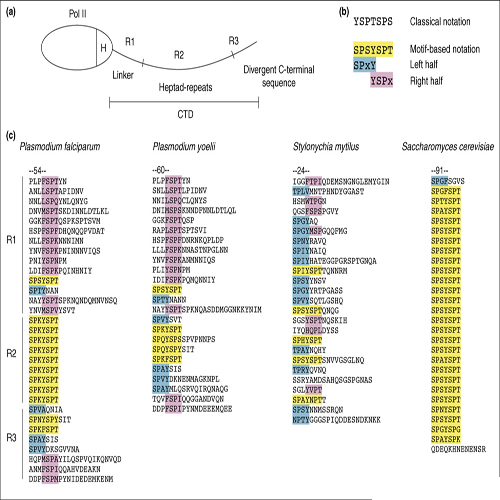Molecular evolution of the RNA polymerase II CTD
08-May-2008
In higher eukaryotes, an unusual C-terminal domain (CTD) is crucial to the function of RNA polymerase II in transcription. The CTD consists of multiple heptapeptide repeats; differences in the number of repeats between organisms and their degree of conservation have intrigued researchers for two decades. Here, we review the evolution of the CTD at the molecular level. Several primitive motifs have been integrated into compound heptads that can be readily amplified. The selection of phosphorylatable residues in the heptad repeat provided the opportunity for advanced gene regulation in eukaryotes. Current findings suggest that the CTD should be considered as a collection of continuous overlapping motifs as opposed to a specific functional unit defined by a heptad.











